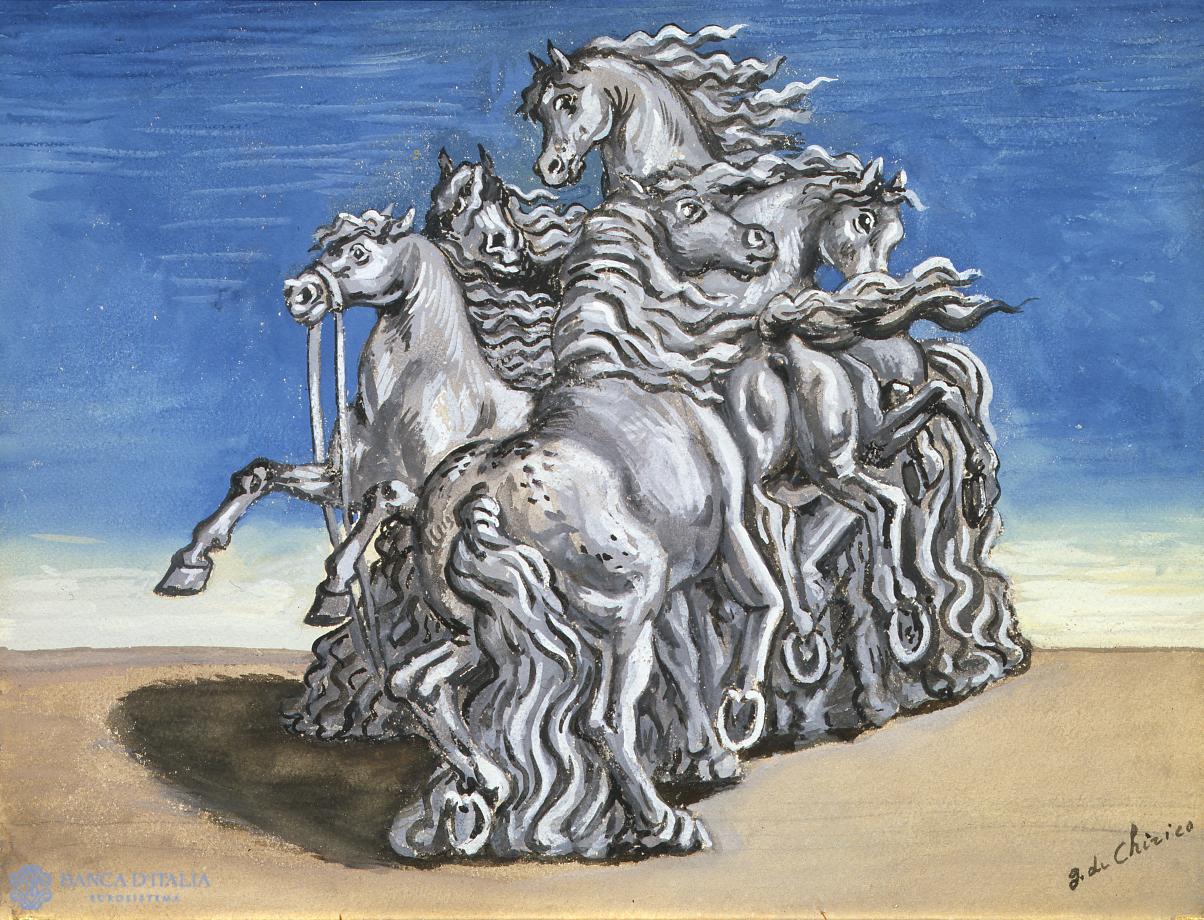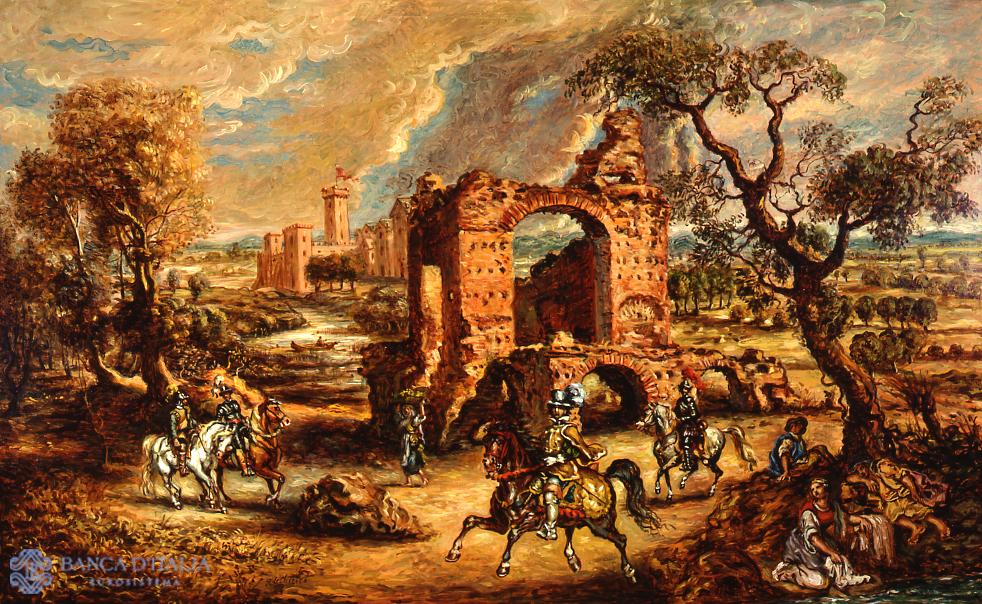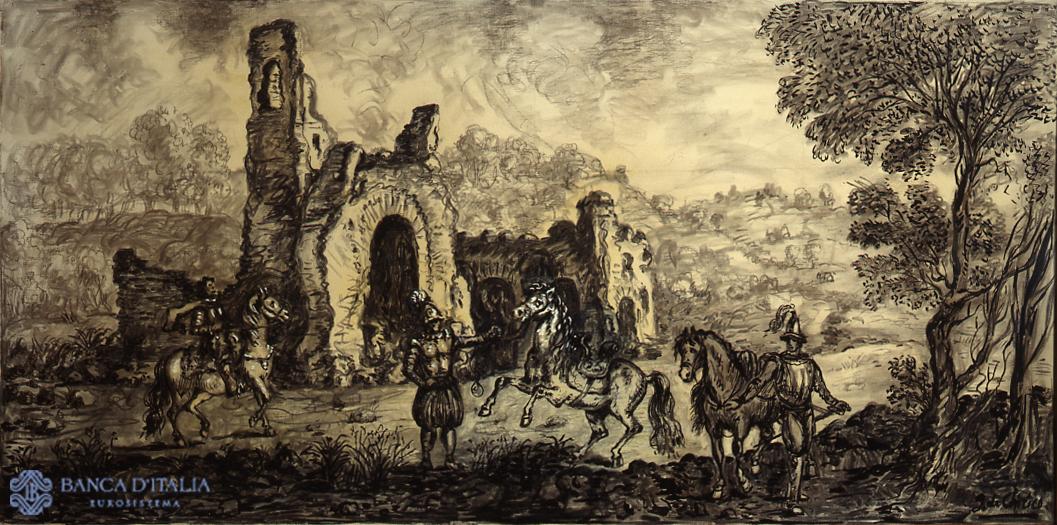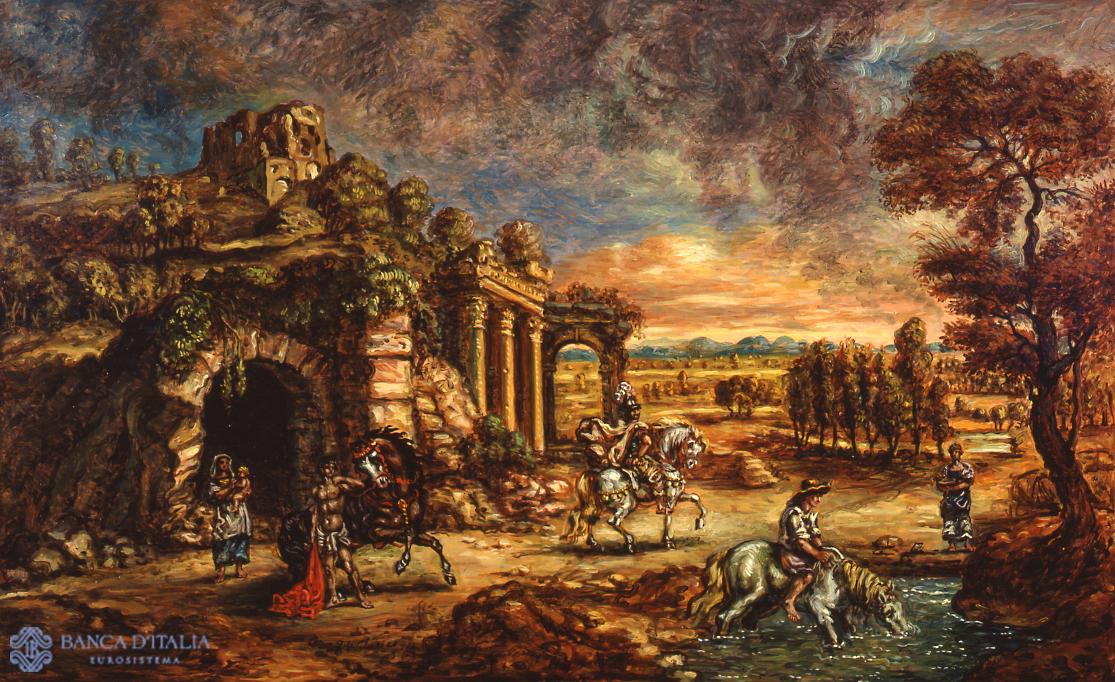Giorgio De Chirico was born in Volos (Greece) in 1888 of Italian parents, and moved to Italy in 1906, later attending the Academy of Fine Arts in Munich. In 1909 he returned to Italy, living in Milan and painting under the influence of Boecklin. In January 1910 he moved to Florence where he produced his first works leaning toward Metaphysical Art – a term he himself applied to his work.
Giorgio de Chirico’s metaphysical vision was influenced by literary and philosophical texts, from Nietsche to Schopenhauer and Papini. In 1911 he arrived in Paris where he frequented Apollinaire and focused further on his own Metaphysical Art, with visions of piazzas and porticos whose emptiness suggested a sense of suspense and mysterious silence. At the outbreak of the First World War he returned to Italy, spending a few years in Ferrara with Carlo Carrà whose work he influenced. In Giorgio de Chirico’s painting, the protagonists were now mannequins, images of alienated humanity. Although his metaphysical painting exerted a strong influence on the birth and development of Surrealism, in the 1920s Giorgio de Chirico returned to a more traditional mode of painting, taking inspiration from “museum pieces”, that is from the great masters of the past, and encountering incomprehension on the part of André Breton, who wanted to imprison him within the Surrealist movement. However, he pursued the metaphysical in parallel with the new inventions which alternated with the naturalistic period and the post-Second World War baroque period. He was a highly original writer and author of very beautiful poetry and novels like Hebdomeros, which were themselves models for the Surrealists. He died in Rome in 1978.
Giorgio De Chirico
Giorgio De Chirico (Volos 1888 - Rome 1978)
20th century AD

Compiler
Augusta Monferini





